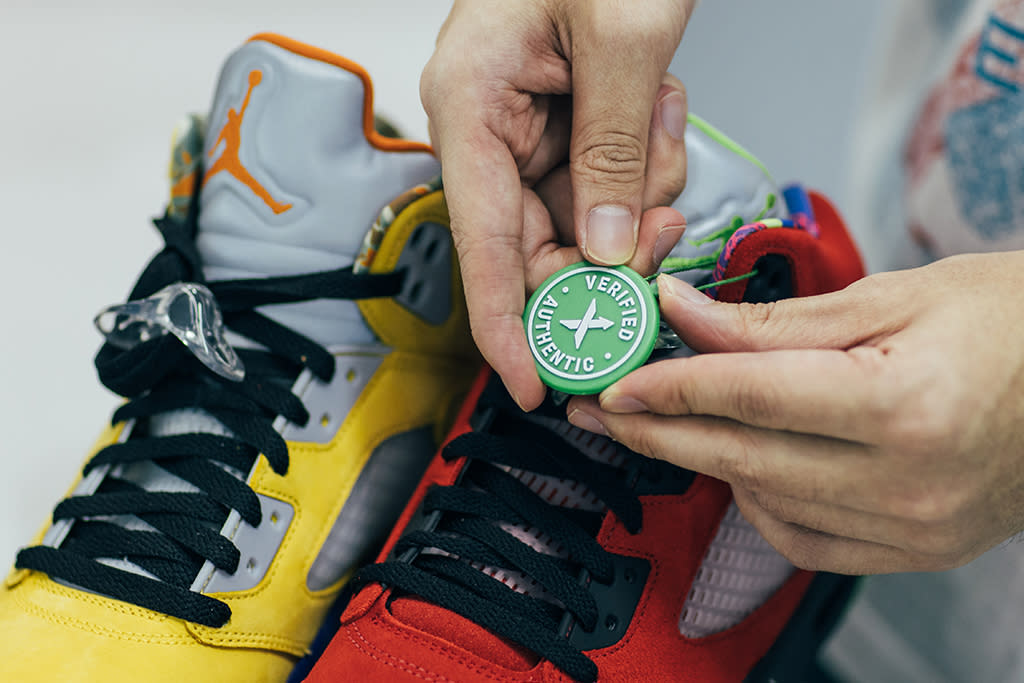StockX Layoffs Suggest Signs of Trouble for the Buzzy Sneaker Resale Platform

Buzzy online sneaker resale platform StockX is facing a slew of troubles, from layoffs to lawsuits.
Earlier this week, the company laid off 8% of its total workforce, saying in a statement that it needed to adapt and pivot its business to keep up with “macroeconomic challenges” that are impacting the economy and its business.
More from Footwear News
StockX Lays Off 8% of Workforce, Citing 'Macroeconomic Challenges'
Updated: StockX Hits Back at Nike Over Clams It Sells Counterfeit Shoes Amid Ongoing Lawsuit
According to an email from CEO Scott Cutler to employees, which was viewed by Footwear News, StockX has taken measures to reduce costs by prioritizing existing investments, reducing discretionary expenses, placing limits on new hires and improving efficiency in the company’s trade process.
In recent months, major tech platforms such as Coinbase, Tesla and Robinhood have announced layoffs across staff, while more have announced temporary hiring freezes as they brace for an economic downturn.
But StockX, which hit a valuation of $3.8 billion in April of 2021, was widely considered a standout among retail tech winners throughout the pandemic. At the onset — in May and June of 2020 — StockX had the biggest two months in its history. And in the first half of 2021, the company said it surpassed 6.5 million lifetime buyers.
Despite the positive picture on the outside, the recent layoffs point to signs of trouble for the six-year-old platform. In general, layoffs in a startup generally suggest a level of irresponsibility, over-hiring and lack of necessary financial growth, explained Sucharita Kodali, VP and principal analyst at Forrester.
“Whenever you hear of these things, it raises more questions than anything,” Kodali said. “And you realize everything must not be perfect in sneakerhead resale-land.”
This isn’t StockX’s first round of layoffs either. In April of 2020, StockX cut 12% of its workforce to “ensure long-term sustainability.” StockX said the number of impacted employees at the time amounted to less than 150. And according to a report in Insider, StockX had quietly undergone two previous rounds of layoffs before its third and largest round in April.
Meanwhile, the company continues to soar in valuation, rivaling industry competitors like GOAT. And as of January, the company was rumored to be on track to launch an IPO in the first half of 2022.
Though the health of the company is in question, the general demand for luxury goods has yet to abate. And high-end sneakers and streetwear — the bread and butter of StockX’s merchandise — live somewhere in between the categories of standard retail and luxury, with most popular items boasting a somewhat attainable price point.
“The demand for luxury goods is at all time time high,” said Robert Burke, chairman and CEO of New York based fashion and retail consulting firm Robert Burke Associates.
The broader footwear market is also showing signs of strength in the current economic environment. According to Matt Priest, president and CEO of the Footwear Distributors and Retailers of America (FDRA), the shoe industry has a tendency to be “recession resilient” or even recession-proof.
“If purchases on larger appliances, automobiles or bigger-ticket items start to wane, they often turn to purchasing a pair of shoes to get that feel-good moment,” Priest previously told FN. “It’s one thing to drop $800 or $1,000 on a washer or dryer. It’s another thing to spend $150 on a pair of shoes.”
Even with strong demand, StockX is facing troubles in other realms. In February, Nike filed a lawsuit against StockX, alleging that the sneaker resale marketplace used Nike’s trademarked logos and products in attempts to enter the NFT, or or non-fungible token, market. Nike also said it had obtained four pairs of counterfeit Nike shoes within a two-month period through StockX.
StockX said in a statement that Nike’s filing is “baseless” and added that hundreds of Nike employees — including current senior executives — use StockX to buy and sell products.
Best of Footwear News
Sign up for FN's Newsletter. For the latest news, follow us on Facebook, Twitter, and Instagram.

